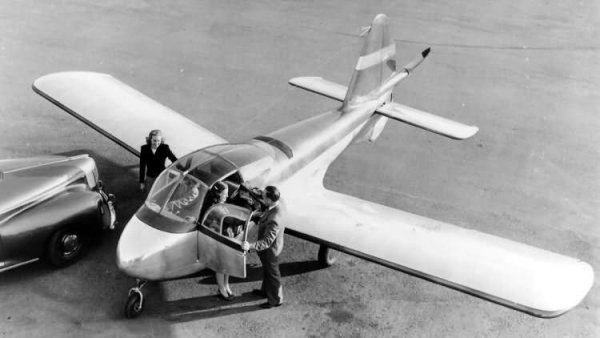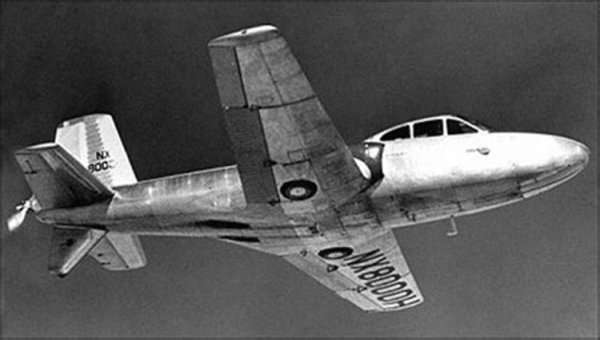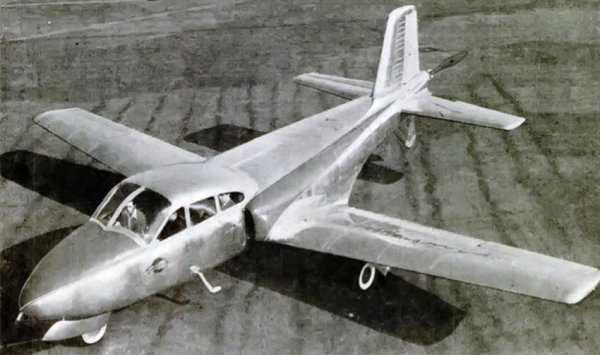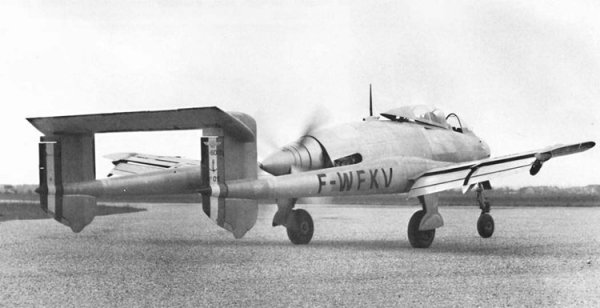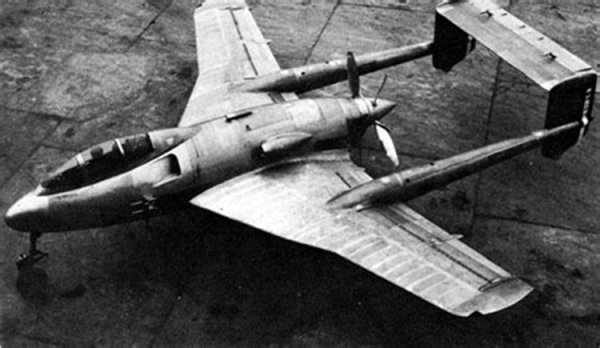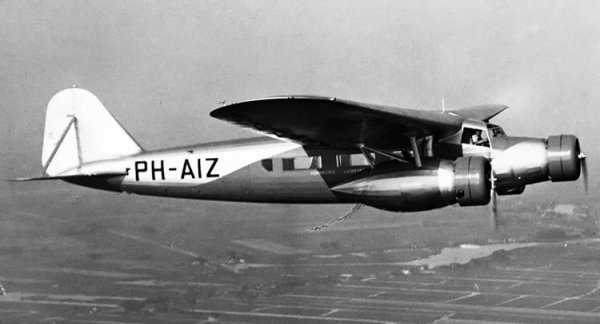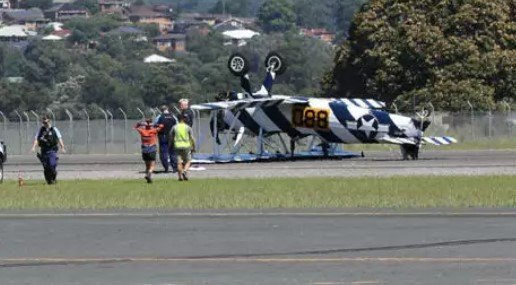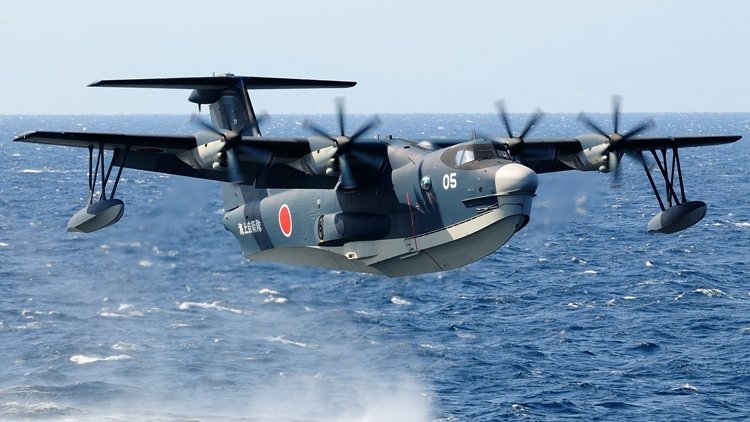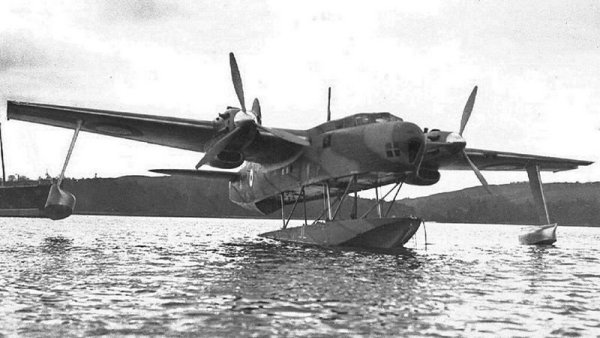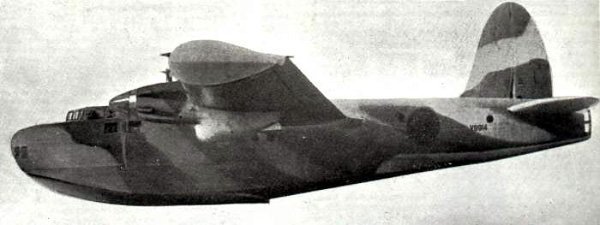-
Posts
7,582 -
Joined
-
Last visited
-
Days Won
67
Content Type
Profiles
Forums
Gallery
Downloads
Blogs
Events
Store
Aircraft
Resources
Tutorials
Articles
Classifieds
Movies
Books
Community Map
Quizzes
Videos Directory
Everything posted by red750
-
The Fokker XA-7 was a prototype attack aircraft ordered in December 1929, and first flown in January 1931 by Fokker and then General Aviation Corporation after it bought Fokker-America in 1930, and entered in a competition held by the United States Army. However, the Curtiss A-8 won the competition, and A-7 development was not continued. The XA-7 was a two-seat low-wing all-metal monoplane design. It featured a thick cantilever wing, tunnel radiator and two closely spaced open cockpits. Despite some innovative features, the XA-7 did not proceed past flight test status. After testing, the sole prototype was scrapped.
-
The Junkers Ju 390 was a German long-range derivative of the Junkers Ju 290 aircraft, intended to be used as a heavy transport aircraft, maritime patrol aircraft and long-range bomber. It was one of the aircraft designs submitted for the abortive Amerikabomber project, along with the Messerschmitt Me 264, the Focke-Wulf Ta 400 and the Heinkel He 277. Two prototypes were created by attaching an extra pair of inner-wing segments onto the wings of Ju 290 airframes and adding new sections to lengthen the fuselages. Only prototype 1 flew.
-
The Lockheed Model 34 Big Dipper was an American two-seat monoplane, designed and built by Lockheed at Burbank for research into the company's potential entry into the civil lightplane and military light utility aircraft market. Only one was built, and following its loss in an accident the program was abandoned. The single engine Big Dipper looks remarkably like the two-engined five seat Douglas Cloudster above. Developed by John Thorp and based on his work on Lockheed's Little Dipper lightplane project, the Lockheed Model 34, named "Big Dipper", was intended as a prototype for a lightplane to sell on the postwar market - Lockheed hoping to sell the aircraft at a price of $1500 - and as a potential 'flying jeep' for the United States Army. It was a low-wing cantilever monoplane with a fixed tricycle landing gear and a conventional empennage; the cabin was enclosed, seating two in side-by-side positions. Unusually the Continental C100 piston engine was fitted in the center fuselage behind the cabin, driving a two-bladed pusher propeller mounted at the rear of the aircraft. Big Dipper. Little Dipper
-
The Douglas Cloudster II was an American prototype five-seat light aircraft of the late 1940s. It was of unusual layout, with two buried piston engines driving a single pusher propeller. Only a single example was built, which flew only twice, as it proved too expensive to be commercially viable. During the early 1940s, Douglas Aircraft Company developed a configuration for high-performance twin-engined aircraft, in which the engines were buried in the fuselage, driving propellers mounted behind a conventional tailplane, in order to reduce drag by eliminating drag inducing objects such as engines from the wing. This layout was first demonstrated in the Douglas XB-42 Mixmaster bomber, which first flew in 1944, showing a 30% reduction in drag compared with a conventional twin-engined layout, while eliminating handling problems due to asymmetric thrust when flying on one engine. The Cloudster II was a low-winged monoplane with a retractable nosewheel undercarriage. The pilot and four passengers sat in an enclosed cabin well ahead of the unswept, laminar flow wing. Two air-cooled piston engines were buried in the rear fuselage, driving a single eight foot diameter twin-bladed propeller, mounted behind the empennage via driveshafts taken from P-39 fighters. Two air intakes forward of the wing directed cooling air to the engines, which then exhausted beneath the fuselage.
-
State border The state border between Tasmania and Victoria lies in the Hogan Group and passes over land on the North East Islet, thus giving a land border between the two states. Before Victoria became a colony, it was agreed that New South Wales would have the sovereignty of all the land to Bass Strait, and Tasmania would have Bass Strait, except for waters near the coast. The original intention was that these Bass Strait Islands would be part of Tasmania, but the surveyed position for Wilson's Promontory was slightly off, and the border placed too far south at 39°12' S. Once this was discovered the Islet was renamed to Boundary Islet. The land border is 85 metres (279 ft) long.
-
The SNCASO SO.8000 Narval (English: Narwhal) was a French carrier-based strike fighter designed by Sud-Ouest in the late 1940s. The French Navy (Marine nationale) ordered two prototypes in 1946 and they made their maiden flights three years later. They were plagued by aerodynamic problems and unreliability issues with their piston engines. The aircraft proved to be slow, lacking in lateral and longitudinal stability and unsuitable for carrier operations; it did not enter production. The French Navy ordered two prototype SO.8000 strike fighters on 31 May 1946 to equip its aircraft carriers. If the prototypes were successful, it planned to order five pre-production models and sixty-five production aircraft. Designer Jean Dupuy developed a twin-boom pusher configuration design with a crescent wing and tricycle landing gear. The horizontal stabilizer was connected at the tops of the vertical stabilizers at the ends of the booms to avoid turbulence from the contra-rotating propeller. The pilot was provided with an ejection seat and the aircraft was intended to be fitted with six 20-millimeter (0.8 in) MG 151 autocannon in the nose and to be able to carry 1,000 kilograms (2,200 lb) of ordnance under the wings. In the end, only the two prototypes were built.
-
The Fokker F.XX was a 1930s Dutch three-engined airliner designed and built by Fokker. It was the first Fokker design to use an elliptical-section fuselage instead of the traditional square fuselage and the first Fokker aircraft with retractable landing gear. The F.XX was a high-wing thick-section cantilever monoplane with a retractable tailwheel landing gear. It was powered by three Wright Cyclone radial engines, one in the nose and one under each wing on struts. The main landing gear retracted into the engine nacelles. The F.XX registered PH-AIZ and named Zilvermeeuw (en: Silver Gull) first flew in 1933. It was delivered to KLM for services from Amsterdam to London and Berlin. Although the F.XX was a more advanced design both in aerodynamics and looks than earlier Fokkers, the arrival of the twin-engined low-wing Douglas DC-2 and DC-3 soon rendered it obsolete. Only one aircraft was built, and after service with KLM was sold to French airline Air Tropique; the plane got a camouflage paint scheme and was registered F-APEZ. Air Tropique had ties with the Spanish Republican government, that used the plane to operate a liaison service between Madrid and Paris. In 1937 it went to LAPE in Spain, and was registered EC-45-E. The plane crashed in Spain February 15, 1938 near Barcelona at Prat de Llobregat Airport. Licence production in the UK as the Airspeed AS.21 was not proceeded with.
-

Latam Airlines flight Syd-Auckland 50 injured
red750 replied to planedriver's topic in Commercial Discussions
According to this mornings news, the unit generating power for the instrument panel failed and all instruments went blank. Backup power from the engines was activated within a couple of minutes. They interviewed an ex-airline pilot who said it does happen occasionally. He couldn't believe so many people didn't have their seatbelts fastened. Just reporting what was said on the TV. -
The Couzinet 10 Arc-en-Ciel ('Rainbow') was built as a first example of the three-engined, aerodynamically refined, cantilever low wing monoplane designer René Couzinet thought offered the safest long range passenger transport, for example on the South Atlantic route. Only one was completed, though other, similar aircraft of different sizes and powers followed. The Couzinet 10 was the first of his designs to be built, though it was the result of his design study number 27. It led to the smaller Couzinet 20 and 30 series and the larger Couzinet 40 and 70. The one-piece wing of the Couzinet 10 was 900 mm (35.4 in) thick at the root, a thickness to chord ratio of 18%, and thinned continuously out to the tip. In plan each wing was trapezoidal, though long tips produced an approximately elliptical form. Long, narrow-chord ailerons filled most of the straight part of the trailing edges. It was entirely wooden, built around two box spars and plywood covered. The Arc-en-Ciel was powered by three 170 kW (230 hp) Hispano-Suiza 8Ac water-cooled upright V8 engines. One was in the nose and the other two ahead of the wing leading edge, all within cowlings that followed the V8's cylinder heads and cooled with Lamblin radiators. Seven wing fuel tanks held a total of 6,200 L (1,400 imp gal; 1,600 US gal).[3] The thickness of the wing at its root allowed crew to reach the engines in flight via a corridor 700 mm (27.6 in) high.
-
A United Airlines flight from Sydney to LA was forced to return to Sydney. The B777 had a 'maintenance problem', so apparently that lets Boeing off the hook.
-

Latam Airlines flight Syd-Auckland 50 injured
red750 replied to planedriver's topic in Commercial Discussions
https://au.yahoo.com/news/dozens-injured-technical-event-sydney-071029076.html -
-
The Andiel Typhoon TD1 is a homebuilt, two place low wing recreation aircraft designed and built in Australia by Willy Andiel. It first flew in April 2003 powered by a 100hp VW RG TT 2000 engine and features an all-flying tailplane. The vision was to make plans available to kit builders, however this did not eventuate and it was withdrawn from use in 2011. This one-off aircraft was donated to HARS Parkes and recovered from Cowra. The engineering team has been working to restore it to display condition.
-
Indonesia opens inquiry after pilots fell asleep on flight carrying 153 people. Pilot and co-pilot unresponsive for nearly 30 minutes, prompting review of country’s night flight operation. Read more here.
-
AA-Royal Marines in Action - Amazing-VID-20210515-WA0001.mp4
-
The Avro 706 Ashton was a British prototype jet airliner made by Avro during the 1950s. Although it flew nearly a year after the de Havilland Comet, it represented an experimental programme and was never intended for commercial use. The Avro 689 Tudor 9 was based on the Avro 689 Tudor II piston-engined airliner using experience on work on the Rolls-Royce Nene jet-powered experimental variant, the Tudor 8, which made its first flight on 6 September 1948. The Avro Type 689 Tudor 9, later renamed the Avro 706 Ashton, was a four-jet-engined research aeroplane powered by Rolls-Royce Nene engines paired in wing nacelles. Six were built using the Tudor airframe, beginning with the conversion of Tudor I initially powered by Nene 5 engines. The Ashtons that followed incorporated the upgraded Nene 6 and featured an enlarged, "square-shaped" tail fin and tricycle landing gear replacing the original "taildragger" configuration. The engines were tightly grouped in two nacelles that were faired neatly into the wing but also extended below in streamlined pods. The four-engine arrangement compensated for the low thrust of the early jet engines and greatly reduced asymmetric effects in an "engine-out" scenario. The crew was composed of a pilot, co-pilot, navigator, flight engineer and radio operator clustered together in the cockpit and front compartment of the Ashton. A larger complement could be carried in the spacious fuselage when warranted.
-

Stearman down Shellharbour airport 09 Mar 2024
red750 replied to JEM's topic in Aircraft Incidents and Accidents
-
The Pander S-4 Postjager was a 1930s Dutch three-engined mailplane designed and built by Pander & Son. Only one was built which was destroyed during the MacRobertson Air Race. The S-4 was designed as a fast mailplane for the service between the Netherlands and the Dutch East Indies. It was a three-seat low-wing monoplane powered by three 420 hp (313 kW) Wright Whirlwind radial engines. It had a conventional retractable landing gear with a tailwheel. The S-4, registered PH-OST, first flew on 6 October 1933. In December 1933 it flew a mail flight to Batavia. In 1934 the S-4 was entered into the MacRobertson Air Race between London and Melbourne. It left Mildenhall in England on 20 October 1934 and after 36 hours arrived at Allahabad, India. The aircraft was delayed when the landing gear was badly damaged on arrival at Allahabad. It was ready to leave on 26 October but while taxiing for departure it hit a motor car and burst into flames and was destroyed; the crew jumped out and escaped injury.
-
The Fiat G.55 Centauro (Italian: "Centaur") was a single-engine single-seat World War II fighter aircraft used by the Regia Aeronautica and the Aeronautica Nazionale Repubblicana in 1943–1945. It was designed and built in Turin by Fiat. The Fiat G.55 was arguably the best type produced in Italy during World War II, (a subjective claim also frequently made for the Macchi C.205 Veltro as well as for the Reggiane Re.2005 Sagittario) but it did not enter production until 1943, when, after comparative tests against the Messerschmitt Bf 109G and the Focke-Wulf Fw 190, the Luftwaffe itself regarded the Fiat G.55 as "the best Axis fighter". During its short operational service, mostly under the Repubblica Sociale Italiana insignia, after the 8 September 1943 armistice, this powerful, robust and fast aircraft proved itself to be an excellent interceptor at high altitude. In 1944, over Northern Italy, the Centauro clashed with British Supermarine Spitfire, P-51 Mustang, P-47 Thunderbolt and P-38 Lightning, proving to be no easy adversary. Italian fighter pilots liked their Centauro but by the time the war ended, fewer than 300 had been built. By comparison, the Germans produced 35,000 Bf 109s. By 1939, all the main Italian aircraft factories had begun designing a new series of monoplane fighter aircraft, using inline engines as opposed to the radial engines that powered the first generation Italian monoplane fighters used in the early years of World War II (fighters such as the Fiat G.50 and the Macchi C.200). This process saw the first generation radial-engined fighters re-equipped with the Italian-built copy of the Daimler-Benz DB 601 engine, the so-called Serie 1/2, whose most prominent representative was the Macchi C.202 Folgore (which was an aerodynamically revised Macchi C.200- also known as Macchi C.201 - with an inline V-12 instead of a radial engine). Aircraft in this series were given alphanumeric designations ending in the number "2". However, the process didn't stop, and already in 1941, designers shifted their attention on the new, larger and more powerful Fiat RA.1050, a license-built copy of the Daimler-Benz DB 605. Aircraft powered by this new engine became the "Serie 5", and all had alphanumeric designations ending in the number "5" (Macchi C.205, Reggiane Re.2005, Fiat G.55). Fiat designer Giuseppe Gabrielli, while experimenting a new version of his Fiat G.50 fighter, equipped with the DB 601, started a new design that was to be powered by the DB 605. The first G.55 prototype flew on 30 April 1942, piloted by commander Valentino Cus, immediately showing its good performance and flight characteristics. It was armed with one 20 mm MG 151/20 cannon with 200 rounds of ammunition, installed in the forward fuselage and firing between the cylinder banks, exiting through the propeller hub. In "Sottoserie O" airframes, there were also four 12.7 mm (.5 in) Breda-SAFAT machine guns; two in the upper engine cowling, and two in the lower cowling, firing through the propeller arc, with 300 rpg. This layout soon proved to be troublesome, both for rearming and for the servicing of the lower cowling mounted machine guns: for this reason, the two lower machine guns were removed, and replaced with a 20 mm MG 151/20 in each wing, in the later production series, the Serie 1 (for a total of three cannon and two 12.7mm machine guns, although this varied; some had machine guns in the wings instead of cannon). For further details, including operational history, further development and variants, click here.
-
The Short S.17 Kent was a British four-engined 15-seat biplane luxury flying boat airliner, designed and built by Shorts to meet a requirement from Imperial Airways for an aircraft with greater range than the Short Calcutta. The new aircraft was to have sufficient range to fly the stage from Mirabella, Crete, to Alexandria in Egypt without the need for refuelling stops in Italian colonial territory due to a political row which had led the Italian Government to ban British aircraft from its ports. Three aircraft were built, each receiving its own name: Scipio, Sylvanus and Satyrus; they were referred to collectively within Imperial Airlines as the Scipio Class flying boats. Each had an aircrew of three (two pilots and a radio operator/navigator) and a steward to prepare meals and light refreshments for the passengers. The Short Kent flying boat was essentially an enlarged, four-engined version of the Calcutta, with the same passenger carrying capacity but with an increased payload for mail and fuel. It was powered by four Bristol Jupiter XFBM radial engines mounted on vertical struts between the upper and lower planes. The wings were constructed using corrugated duralumin box spars and tubular rib assemblies, with a fabric covering and Frise ailerons on the upper and lower wings. Duralumin walkways were provided to allow ready access to the engines for maintenance purposes. The tail unit consisted of braced monoplane horizontal and vertical stabilizers; the tailplane was fitted with Flettner-type servo tabs for trimming on the Short Scylla which had the same wings and tail as the Kent. The anodised duralumin fuselage was mounted below the lower wing, with the planing bottom of the hull made of stainless steel (as on the Singapore II) with a transverse main step. The use of stainless steel reduced the frequency of land inspections of the hull. The bimetallic corrosion problems experienced on the Singapore II hull had been solved; Short Brothers became the first company to master the technique of building seaplane floats and flying boat hulls in this combination of metals. A quick-release hook (controlled by the pilots) was provided, which enabled the captain to start, warm up and (when required) run all four engines up to full power for takeoff while the aircraft was still attached to the mooring buoy. Maximum comfort was required for passengers and crew: the Kent's passenger cabin was 8 ft 6 in (2.59 m) wide and 14 ft (4.27 m) long. The seating was arranged in four rows of facing pairs, with a centre aisle, Pullman-style. The steward's pantry, situated on the port side aft of the passenger cabin, was equipped with twin-burner oil stoves on which stewards (and the valets of valued passengers) could cook meals in flight. The toilet and washroom were opposite the pantry; the mail and freight compartment was further aft. Special attention was paid to sound levels in the passenger cabin and crew's stations; accordingly the engines were fitted with exhaust collector rings and long tailpipes, to reduce exhaust noise inside the hull. The cockpit, for two pilots, was fully enclosed (unlike that of the Calcutta's) with a separate Radio Officer's station directly aft of the cockpit. Three units were built.
-
The ShinMaywa US-2 is a large Japanese short takeoff and landing amphibious aircraft that employs boundary layer control technology for enhanced STOL and stall suppression performance. Manufactured by seaplane specialist ShinMaywa (formerly Shin Meiwa), it was developed from the earlier Shin Meiwa US-1A seaplane, which was introduced during the 1970s. The ShinMaywa US-2 was developed on behalf of the Japan Maritime Self-Defense Force (JMSDF) as a 'like-for-like' replacement for its aging US-1A fleet. In Japanese service, it is operated in the air-sea rescue (ASR) role. The US-2 can also be used in other capacities, such as an aerial fire fighter, carrying 15 tonnes of water for this mission. Various overseas operators have held discussions on potential acquisitions of the type, including the Indian Navy and Indian Coast Guard. Other countries such as the United States, Indonesia, Thailand, and Greece have also shown interest in the US-2 for various purposes. During 1969, the Japan Maritime Self-Defense Force (JMSDF) issued a production order to Japanese seaplane manufacturer Shin Meiwa for a group of 21 anti-submarine aircraft, which were given the designation PS-1. The service had also opted to procure a variant of the type, designated US-1A, specifically for search-and-rescue (SAR). The US-1A was Japan's first amphibian - capable of being used on land and sea. During the 1990s when the US-1A fleet was beginning to show its age, the JMSDF attempted to obtain funding towards acquiring a replacement, but could not secure enough to develop an entirely new aircraft. Therefore, during 1995, ShinMaywa, as Shin Meiwa had been renamed (reportedly so that the name would be easier to pronounce for non-Japanese speakers) commenced work on a project to develop an upgraded and modernised version of the US-1A, initially referred to as the US-1A kai (US-1A 改 - meaning "improved US-1A"). This modified aircraft features numerous aerodynamic refinements over its predecessor, along with a pressurised hull, and the adoption of more powerful Rolls-Royce AE 2100 engines and electronic cockpit instrumentation. The JMSDF also listed various refinements for the amphibian, including improved handling while landing on water, better onboard patient transfer facilities, and improved search-and-rescue capabilities at sea. On 18 December 2003, flight testing of the type, which was subsequently designated as the US-2, commenced. During early 2007, ShinMaywa formally launched commercial production of the amphibian. Production is handled by several of Japan's aviation companies. Mitsubishi manufactures the outer wing sections and the rear part of the engine nacelles, while NIPPI Corporation builds the watertight landing gear housings, and Kawasaki Heavy Industries produces the cockpit. Final assembly is performed by ShinMaywa around the US-2's hull. The production line only has the capacity to produce two aircraft at a time. During 2009, the first production US-2, which was outfitted for the search and rescue mission, was delivered to the Japan's Ministry of Defense. In 2010, ShinMaywa unveiled specifications for a civil fire-fighting variant of its US-2 amphibian. It began marketing the new variant to potential overseas customers that same year. The fire-fighting model replaces one fuel tank with a 15 tonne water tank, reducing its maximum range to 2,300 km (1,245 nm) compared with the SAR's 4,700 km range. The tank is durable enough for salt water, foam and fire retardant. Other features include a pair of water scoops for collecting water, automatic foam mixing equipment and a computer-controlled water drop system.
-
The Blackburn B-20, an experimental aircraft that took to the skies in 1940, was designed to significantly enhance the efficiency of flying boat models. Blackburn Aircraft initiated a self-directed design exploration, grounded in a patent submitted by their lead designer, John Douglas Rennie, which featured a retractable pontoon float that doubled as the planing hull. The B-20 aimed to merge the prime attributes of the flying boat and the floatplane. When on water, it functioned primarily as a floatplane, supported by a substantial float beneath the fuselage for buoyancy, complemented by two smaller floats near the wingtips ensuring stability. Once airborne, the central float retracted upward into the fuselage, snugly fitting into a "notch" to streamline seamlessly with the fuselage, while the wingtip floats, akin to the design on the American Consolidated PBY flying boat, extended outward to form the wingtips. This innovative design provided optimal wing incidence for both takeoff and flight, significantly reducing the drag typically associated with the deep hulls of traditional flying boats. Only 1 built. Hull extended Hull retracted
-
https://www.scramble.nl/military-news/raaf-to-replace-current-b737-bbjs









